
OR
“New constitution the most liberal and democratic in Nepal’s modern history”
Published On: November 7, 2016 06:39 PM NPT By: Sher Bahadur Deuba
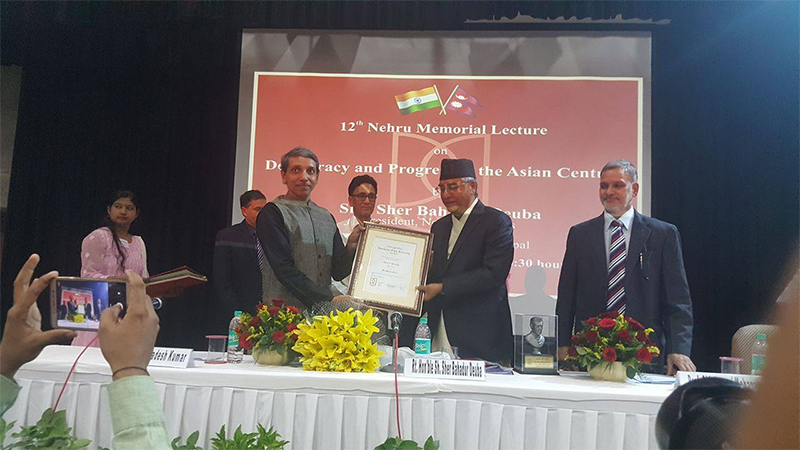
Full text of the speech delivered by former Prime Minister and Nepali Congress President Sher Bahadur Deuba on “Democracy and Progress in the Asian Century” at Jawaharlal Nehru University, New Delhi on Sunday.
I feel honored at being invited to deliver the 12th Nehru Memorial Lecture.
To seek to do justice to the great contributions of Nehru in advancing democratic thought across developing countries, I have chosen the theme of democracy and progress in the Asian Century.
As a leading freedom fighter and the first Prime Minister of independent India for 17 years, Pandit Nehru was, of course, a giant in politics. He shaped the democratic path that India is on today. As a visionary, he guided many at a time of uncertainty during independence. And as one of the leaders of the non-aligned movement, Nehru was a statesman of global stature.
As a student, I read about his letters to his daughter, Indira, and his book “The Discovery of India.” I recall his fond references to Nepal on the spread of Buddhism, bravery of Gurkha soldiers, and the truly independent status of Nepal throughout history. When Nehru passed away in 1964, everyone engaged in the democratic movement in Nepal felt a sense of deep loss.
India’s greatest gift to the developing world was the conviction that a democracy was needed to not only hold plural societies together, but it could actually thrive as a system of government even in poor countries.
Indian leaders have accorded great respect to parliamentary norms and values and worked hard to establish parliamentary supremacy in forcing governments to be answerable to the people.
Let me briefly talk about Nepal's Democratic movement
Nepal’s democratic movement was inspired by leaders of the Indian freedom movement such as Mahatma Gandhi, Pandit Nehru and Jay Prakash Narayan. Nepali leaders like BP Koirala also actively participated and were even jailed for India’s freedom.
Four years after India’s independence, when the Nepali Congress overthrew the oligarchic Rana rule in Nepal, it was Nehru who brokered the truce in Delhi. His support paved the way for the ordinary sons and daughters of Nepal to aspire to govern for the first time in our history.
Nepal’s democratic achievements, therefore, owes a great deal to the support and solidarity of India.
But after ten years of democracy King Mahendra managed coup d'état and imposed autocratic regime, Many leaders including sitting Prime Minister B.P. Koirala was imprisoned. After long struggle for restoration of Democracy I myself participated in the democratic movement and was altogether imprisoned for 9 years. After 30 years of long struggle we succeeded in restoring democracy in 1990. But again 15 years later in 2005 King Gyanendra took power and imprisoned many leaders including myself when I was sitting Prime Minister.
India’s greatest gift to the developing world was the conviction that a democracy was needed to not only hold plural societies together, but it could actually thrive as a system of government even in poor countries.
After a historic people's movement in 2006 we restored democracy once again and held elections of the Constituent Assembly. My Party the Nepali Congress led all these struggles, we belive that Nepal needs an open, vibrant multi-party democracy. Not only did our struggles for democracy in 1950 and 1990 succeed under the leadership of the late Ganeshman Singh, Krishna Prasad Bhattarai and Girija Prasad koirala, but the Nepali Congress also played a leading role to end a 10-year long armed insurgency in 2006 with the support of India, The 12-point agreement eased the entry of the Maoists rebel into the democratic mainstream, and abolish the institution of monarchy without bloodshed.
Constitution and democracy as work in progress
Ladies and Gentlemen, I will now speak about the Nepal’s new constitution and its process and progress. Democracy is a work in progress whose bedrock is a living, forward-looking Constitution. Nepal, too, promulgated a new constitution written by the people’s representatives in 2015 just as India did in 1947 with an historic Constituent Assembly. Prior to this new Constitution all our previous constitutions were issued, one way or the other, by the kings of Nepal.
Overall, our new constitution is the most liberal and democratic in Nepal’s modern history of nearly 250 years. Every woman has equal right to lineage without discrimination, right to property, full reproductive rights and protection from domestic violence, through the principle of proportional representation, at least one third of membership in national and provincial parliaments will comprise of women. Top constitutional positions such as that of the president, speaker and their deputies will see full gender balance.
Furthermore, forty percent of parliamentary seats are to be filled in a proportional basis to redress the likely under-representation of Dalits, Madhesis, indigenous communities, and lagging regions. The constitution also provides for an elaborate set of 31 fundamental rights to employment, food, housing, social security, and education in the native language.
As you may be aware, though Nepal’s constitution was approved by a landslide majority of the constituent assembly some sections of the Nepali society are not happy with certain provisions in it. We are committed to amending clauses of the new constitution to make it broadly acceptable to as many parties as possible, particularly in the Tarai-Madhesh region.
Democracy as a Universal form of government
I would now like to touch upon the theme of democracy as a universal form of government. The merit of democracy is in its endorsement of pluralism; pluralism of stakeholders, pluralism of ideas, and pluralism of opinions. The distinction of democracy is in its respect for freedom: freedom of thought as well as speech. Periodic elections and universal franchise make democratic government accountable to the people. It is the people who are sovereign in a democracy, whose collective will rules. Electoral ballots are the strongest armor in the arsenal of people to defend their aspirations as well as the very institution of democracy. Modern democratic systems nowadays even provide real and virtual platforms for dissent and discourse though public hearing and other means. Provided with feedback, policymakers can reflect upon the overall aspects of development. They can adjust their priorities and their course of action to achieve the end goals.
As you may be aware, though Nepal’s constitution was approved by a landslide majority of the constituent assembly some sections of the Nepali society are not happy with certain provisions in it. We are committed to amending clauses of the new constitution to make it broadly acceptable to as many parties as possible, particularly in the Tarai-Madhesh region.
The Rise of the South: the Asian century
Ladies and Gentlemen, I will now digress upon the Asian century. According to the historian Angus Madisson, two hundred years ago, Asian countries produced over half of world output. But by 1950, the share of China and India had fallen to less than 10 percent. Today, there is little doubt that the 21st century will be shaped by India, China and other emerging Asian powers.
In this Asian century, there will be a profound structural shift in the center of economic gravity. The rise of the South will enhance the voice of developing countries on the global stage and reallocate resources.
I am hopeful that this rebalance will lead to a more just and peaceful multi-polar world. With growing might embedded in its educated and skilled youth and fast growing middle-class, the big countries of Asia can now do justice to the cause of progress across the developing world.
We need a united front as we seek to generate, share and sustain prosperity for all. This is why countries like Nepal are encouraged by the rise of the South, with India as the vanguard.
A key driving force of progress will be the new technologies and industries of the future. They will allow poor countries like Nepal to catch-up by leap-frogging. Digitization has lowered the cost of participation in the global marketplace. Today, 80 percent of global exports are linked to production networks of trans-national corporations across multiple countries.
Middle class people in mega cities will increasingly become influential in governance. By 2030, every one in ten citizens of the world will live in about 35 megacities of the South. India alone will have seven megacities.
Urbanization will bring challenges, but also opportunities. If governed well and connected to each other with efficient transportation, digital infrastructure, and power grids, cities can become a new source of growth. The expansion of the middle class, and their location in megacities that are connected with peers will create a tighter global village.
Migration will continue to shape the flow of resources and ideas. Last year, 250 million people lived in countries other than their own. Remittances account for a large share of income in the South. In Nepal, they have helped reduce poverty and shield people from hardship even during armed conflict.
More than three billion people use the Internet today. Social media also have connected people in ways never seen before. These trends will magnify as emerging industries mature, from robotics and data mining to the codification of money and genomics.
Remittances account for a large share of income in the South. In Nepal, they have helped reduce poverty and shield people from hardship even during armed conflict.
The rise of the South also expands the source of concessional development financing in poor countries. The establishment of new banks in the South provides an alternative source of funds and technical assistance. This will shift priorities towards developing infrastructure and connectivity.
Southern models of trade, investment and technology transfer also open new opportunities. This is already happening -- cheap cell phones are revolutionizing information flows, generic medicines saving lives, and new crop varieties boosting rural livelihoods.
Of course there could be temporary setbacks. Annual growth rates could fluctuate, and big countries face difficulties due to causes that cannot be predicted now. But it is the medium-term trends that appear irreversible. People are living longer; they have wider access to knowledge; and with average incomes rising, men and women everywhere have greater command over their quality of life.
Challenges of the future
Ladies and Gentlemen, now I would like to touch upon future challenges. I have argued so far that a vision of economic prosperity and political freedoms can go hand in hand in the Asian century.
I cannot pretend that we will not face big challenges in the future. Hiccups and hurdles will come our way, but with dialogue and cooperation, we can overcome them. For us, the means matter as much as the end.
Allow me to pose five questions that I think represent some big issues in the Asian century, and elaborate them by turn.
How do we groom young people for jobs with technology-aided skills?
How do we harness renewable resources and mitigate climate change?
How do we eliminate poverty, narrow inequality, and reduce vulnerabilities?
How do we build sustainable cities and prosperous villages?
How do we adapt to new models of production and trade?
The first challenge is to find decent jobs for the tens of millions of young people who join the labor market each year.
South Asia will have the youngest workforce in the world for another decade or two. In 2020, India’s median age will be 29. In Nepal, it will be less than 25. If we can leverage this resource, we can reap development dividends for decades. If we do little, we face a demographic disaster and security issues.
Many of today’s youth have grown up with access to television, internet and mobile phones. They have the modern tools, but not quite the foundations for lifelong learning. The quality of skills and education remains poor with grown children unable to read, write and do basic arithmetic even after attending years of school.
A major policy challenge will be the need to make massive investments in quality public education and health so that young people enter the workforce with useful skills.
South Asia will have the youngest workforce in the world for another decade or two. In 2020, India’s median age will be 29. In Nepal, it will be less than 25. If we can leverage this resource, we can reap development dividends for decades. If we do little, we face a demographic disaster and security issues.
The second concern is on the way we manage our common natural resources.
As outlined in the Paris Climate Accord, limiting global temperature increase to within 2-degrees is an urgent task. Globally, the big emitters of Long-lived Climate Pollutants will have to bear a large share of the responsibility.
We in South Asia can cooperate to reduce the spread of Short-lived Climate Pollutants (SLCPs) like black carbon. Pollution in the Indo-Gangetic plains warms the earth and melts Himalayan glaciers. Unlike greenhouse gases, this is a regional menace for which we must find a regional solution.
Nepal’s big rivers can be a source of clean energy to fuel economic growth in the region while displacing dirty sources of power. The relative advantages of South Asian countries can be pooled to match each of our needs through common power grids.
Nepal and India have signed agreements to develop large hydropower projects and to trade energy. We need to expedite their implementation.
Parts of South Asia will also face a major shortfall in the supply of fresh water over the next decade. This crisis will directly hit subsistence, morbidity and survival of tens of millions of people.
On all these topics, Nepal expects to play an outsized role. We want to harness our natural resources for the region’s welfare and to safeguard our planet’s future. In this context we have already dedicated more than 40 percent of our land to reserves and national parks.
The third challenge this century is to eliminate extreme poverty, narrow inequality and reduce vulnerability.
In this century, we must overhaul human conditions of every man, woman, child and adolescent. Poverty has already fallen dramatically over the past 30 years, propelled, in particular, by the success of large countries like India and China.
It is realistic now to limit poverty to the low single digits by 2030. Proposals to introduce “universal minimum incomes” are gaining momentum.
I strongly believe that the world today has the means and the will to implement bold fiscal and social security reforms to abolish extreme forms of poverty.
We will also need to narrow income inequality and reduce vulnerabilities. They pose a threat to social stability and create populist discontent. Through a renewed commitment to improve the quality of public services and invest in social protection and insurance, we can achieve greater equality in opportunities.
We will continue to be hit both by ‘catastrophic disasters’ such as the floods across India the past few years and the devastating Nepal Earthquake of 2015. Every day, our people also suffer the so-called ‘dull disasters’ posed by adverse weather or illness. We need to invest heavily in resilient methods of disaster risk reduction and the installation of early warning systems.
The fourth challenge will be the way we shape urbanization and organize rural livelihoods.
It has been remarked that developed countries are not those where the poor ride cars but the rich ride public transport. Well-governed cities are where economic growth takes off. People’s proximity to each other and the utilization of scale economies make countries productive. Furthermore, cities can also help the planet if mass transport systems and green amenities are put in place. Dense living will lead to fewer carbon emissions.
Because South Asia remains the least urbanized region in the world, we still have an opportunity to shape the quality of urban and rural lives.
South Asian cities like Delhi and Kathmandu must think big and green to enhance visibility of air, sky and mountains; reduce respiratory diseases; make rivers clean and waterfronts recreational; plan for wide roads, biking lanes and pedestrianized zones; and build green landmarks.
At the same time, through equitable regional investments, we need to make our villages prosperous and livable. This is fair to citizens who choose to live there. Villages with modern facilities also reduce pressure on overcrowded cities, and discourage dislocation of families.
The fifth challenge is to embrace a new model of production and trade.
South Asian cities like Delhi and Kathmandu must think big and green to enhance visibility of air, sky and mountains; reduce respiratory diseases; make rivers clean and waterfronts recreational; plan for wide roads, biking lanes and pedestrianized zones; and build green landmarks.
Globalization, new technologies, and innovative norms of social organization are changing the frontiers of production and trade. Jobs and tasks are being outsourced. Knowledge intensity is growing and an entire new economy of sharing has emerged.
Today’s production patterns have undergone a paradigm shift. Production is fragmented across borders. Private standards are more important than public barriers. And services are closely linked to manufacturing productivity. Vocational skills are more important than ever before to take advantage of these new shifts and opportunities.
The model of shared production can be an opportunity for lagging countries because they can specialize in fragments of production. But a full range of enabling policies and infrastructure need to be put in place.
Most East Asian countries progressed with this model. The ‘Make in India’ campaign initiated by Prime Minister Modi brings the new paradigm to India. And it is my hope that Nepali companies too will latch on to regional production networks and take part in shared production across South Asia.
We must revive manufacturing to absorb a large workforce, push for convergence in labor productivity and cater to world demand. In Nepal, the contribution of manufacturing to GDP has shrunk by half over the past 20 years. Even in emerging countries like India, the share of employment in manufacturing has not reached the levels it should at current levels of development.
The issues I have highlighted above are derived from time-tested aspirations to expand economic opportunities, secure political freedoms, and protect the planet.
In this century, however, the means will be different. They will be more complex with policy options squeezed in some areas -- and expanded elsewhere by new technological possibilities.
India and Nepal are in this journey together. We have had a shared past; we will have a shared future. We are tied by our geography, culture, and religions.
Above all, it is the growing people-to-people relationship across our two nations that gives us hope.
Thousands of Nepalis have studied in Indian universities like JNU; thousands come here for religious and recreational visits; millions watch Indian television and cinema. The professional bonds between our intellectuals are getting stronger. It is these informal relations that bring us closer.
As India moves forward to shape the Asian Century, we want to assure that the people of Nepal are with you. We are particularly mindful of your security concerns and vulnerabilities to extremism.
On our part, we hope our partnership with India lifts us economically. With increased investment and wider connectivity, we expect our trade flows to be more balanced and create jobs for the youth.
Finally, I would like to thank the Vice Chancellor of the Jawaharlal Nehru University again for inviting me to deliver the 12th Nehru Memorial Lecture.
I have taken this invitation as a matter of great personal honor, and as recognition of the people of Nepal.
I look forward to building on this milestone to deepen and extend our bilateral relationship in the years to come.
As India moves forward to shape the Asian Century, we want to assure that the people of Nepal are with you. We are particularly mindful of your security concerns and vulnerabilities to extremism.
You May Like This
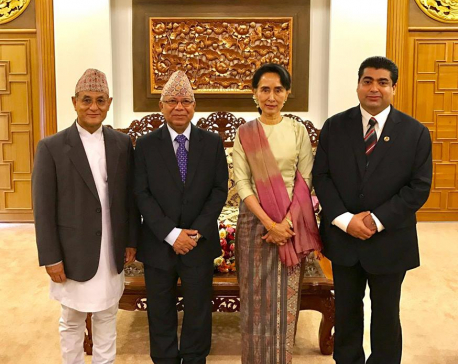
Nepal’s peace process exemplary: Democratic Leader Syuu Ki
KATHMANDU, July 8: Myanmar’s democratic leader and Minister for Foreign Affairs Aung San Syuu-Ki heaped praise to Nepal’s peace process... Read More...
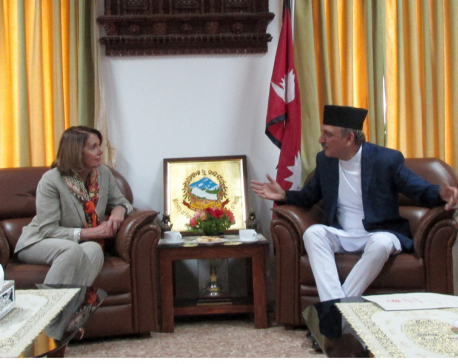
'US can take a page on inclusiveness from Nepal's constitution'
KATHMANDU, May 7: Minister for Foreign Affairs Dr. Prakash Sharan Mahat, in a meeting with Nancy Pelosi, a leader of... Read More...
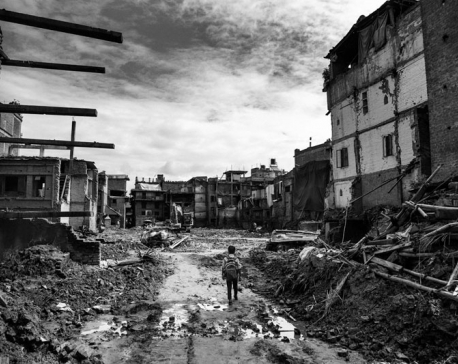
Nepalis’ spirit after the earthquakes was Nepal’s most beautiful story
Omar Havana is a freelance photojournalist based in Cambodia. He lived in Nepal from 2014 to 2015. Omar recently published... Read More...
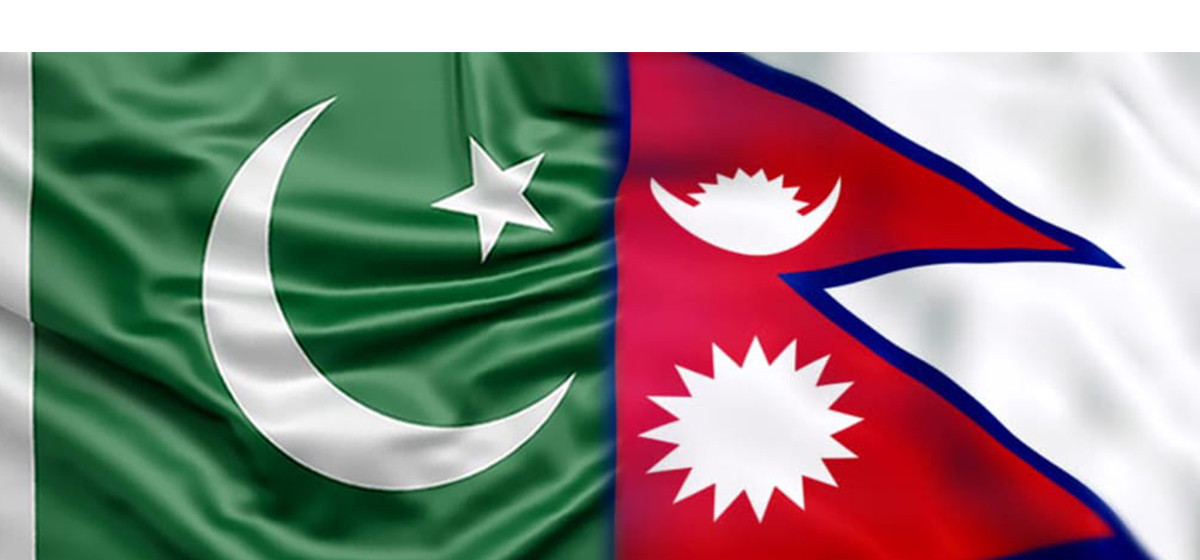
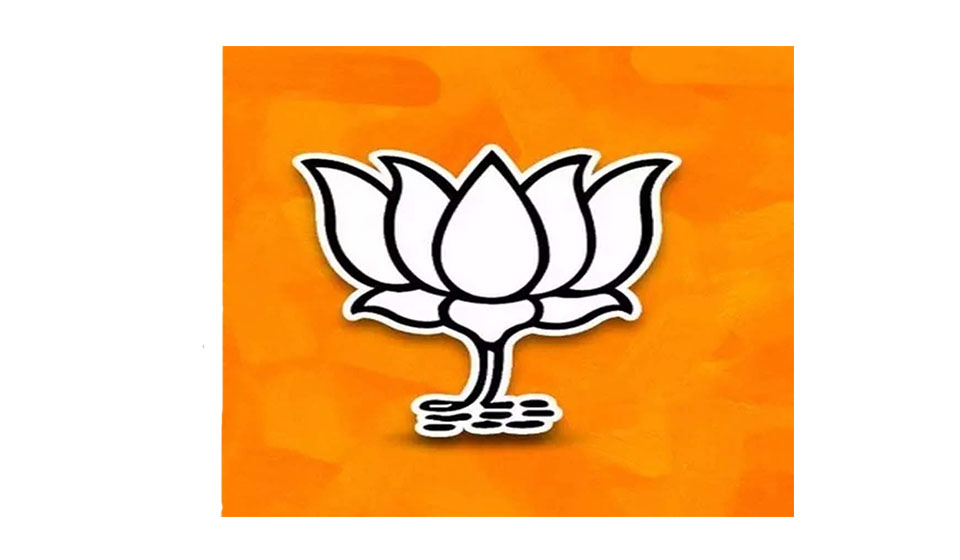
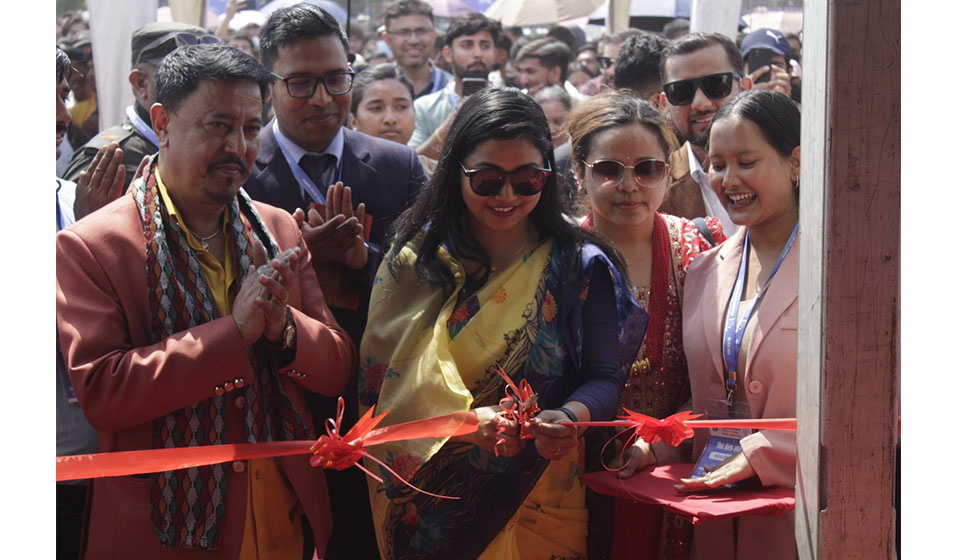
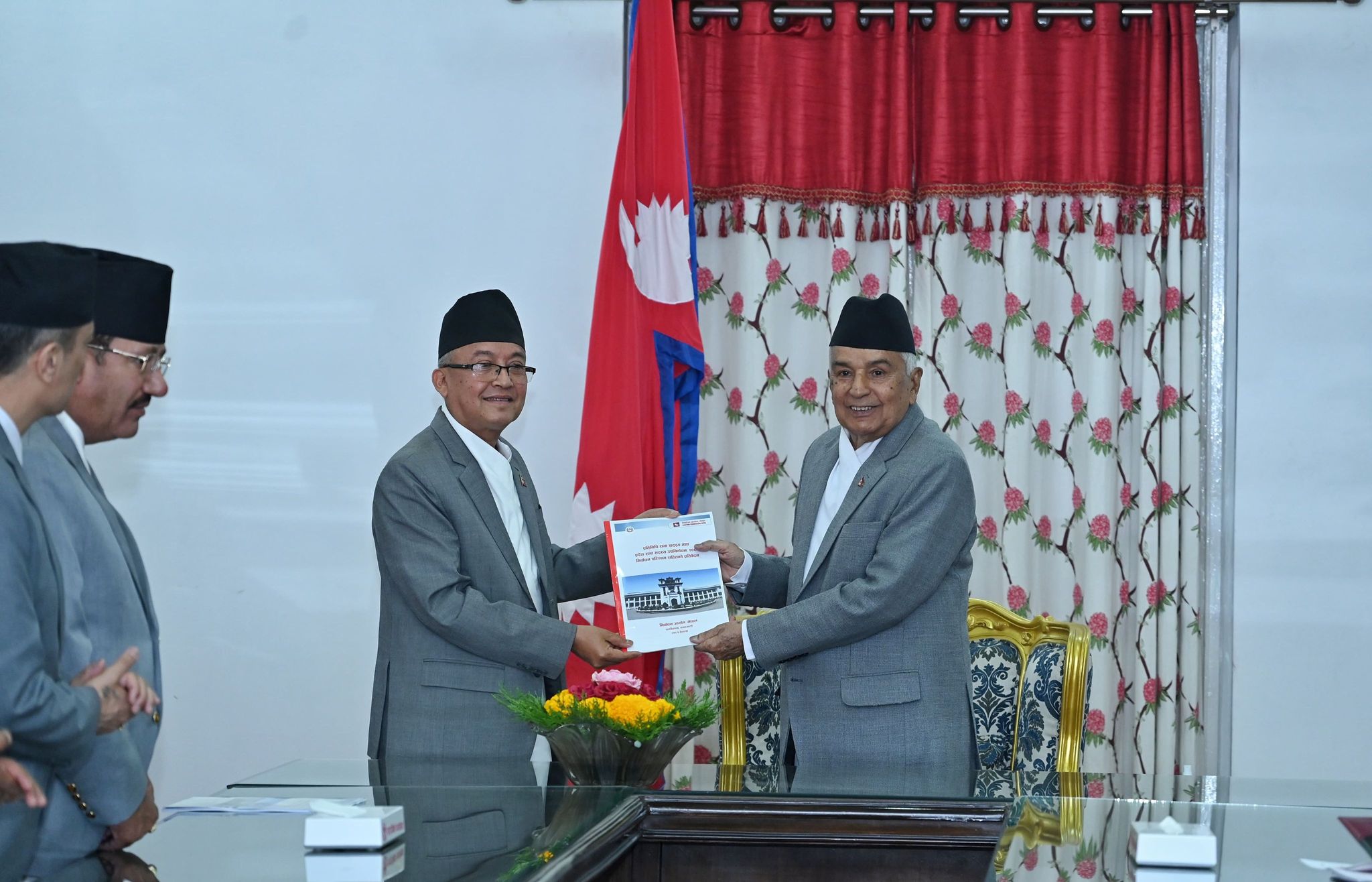
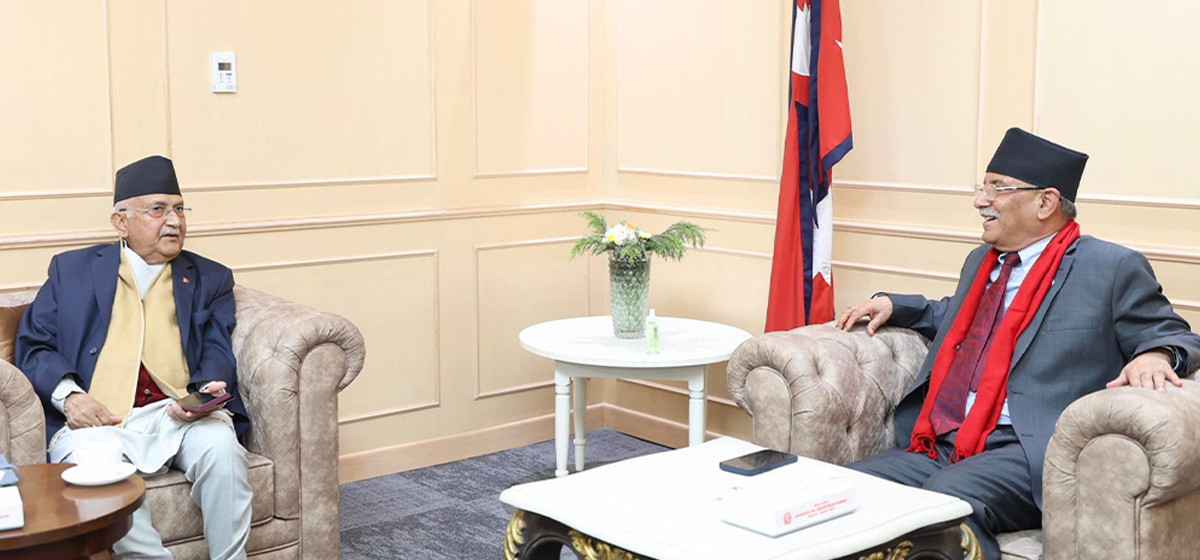
Just In
- EC submits by-election report to President
- Fourth T20 match: West Indies ‘A’ set 210-run target for Nepal
- PM Dahal, UML Chair Oli meet
- Koshi Ruling coalition warns CM Karki of action for his alleged violation of provincial assembly’s special authority
- Govt to expand child nutrition grant program to all 77 districts
- Weather to remain partly cloudy in hilly region, clear in remaining areas
- Fourth T20 match: Nepal to field first after losing toss against West Indies A
- Cricketer Lamicchane warns to disclose names of those involved in conspiracy against him



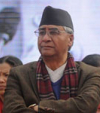
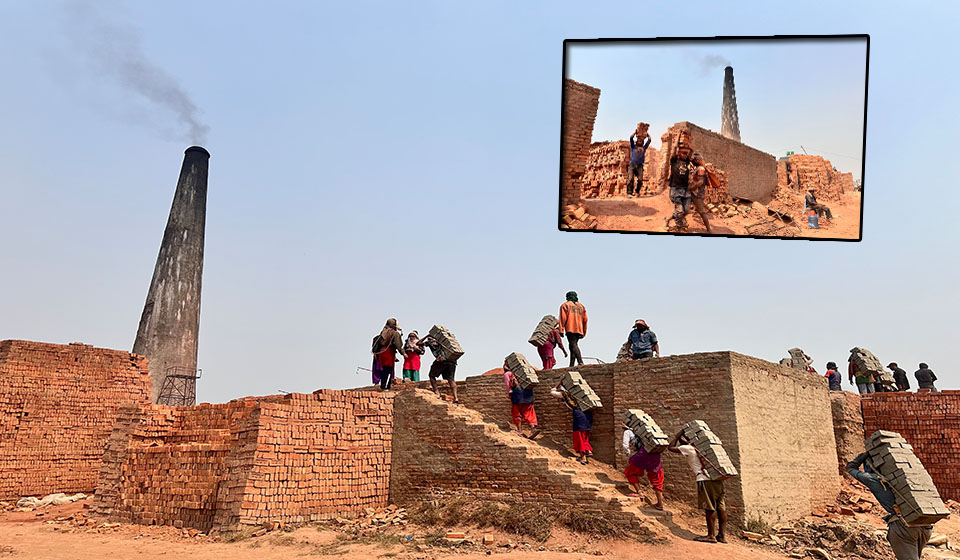
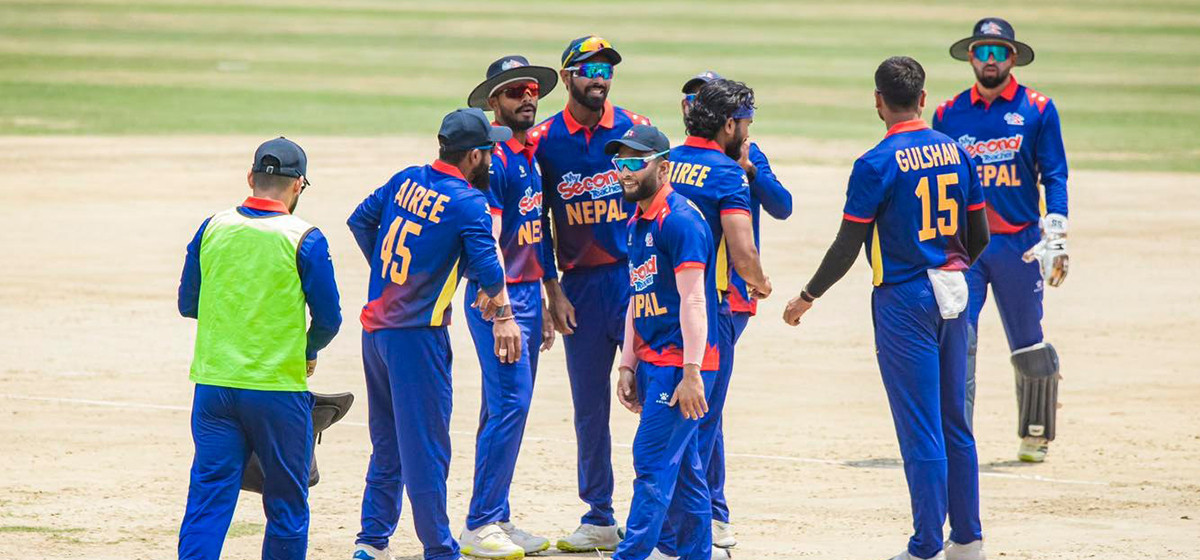
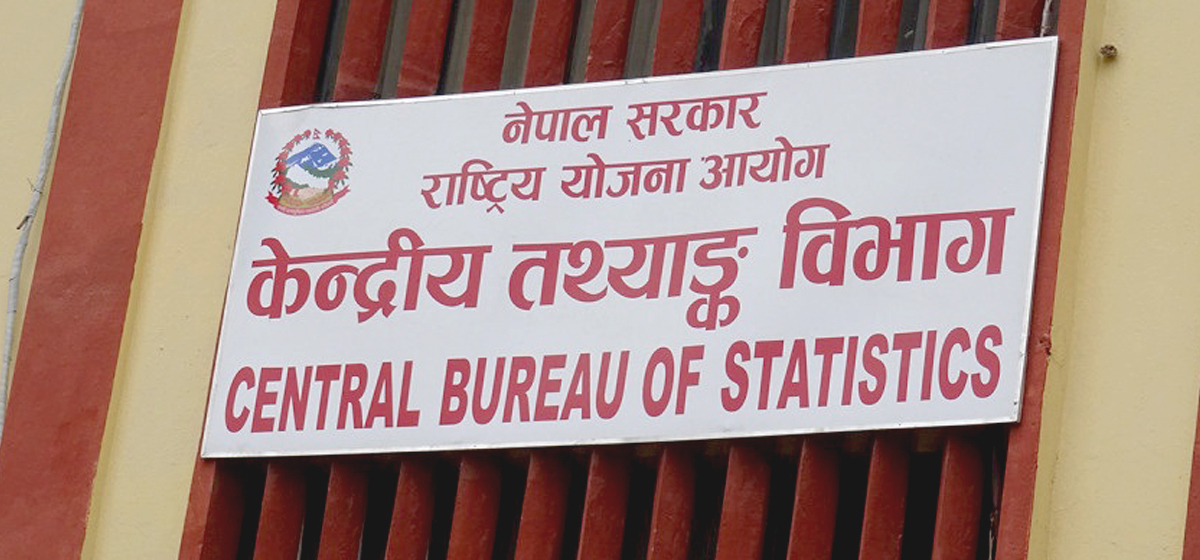
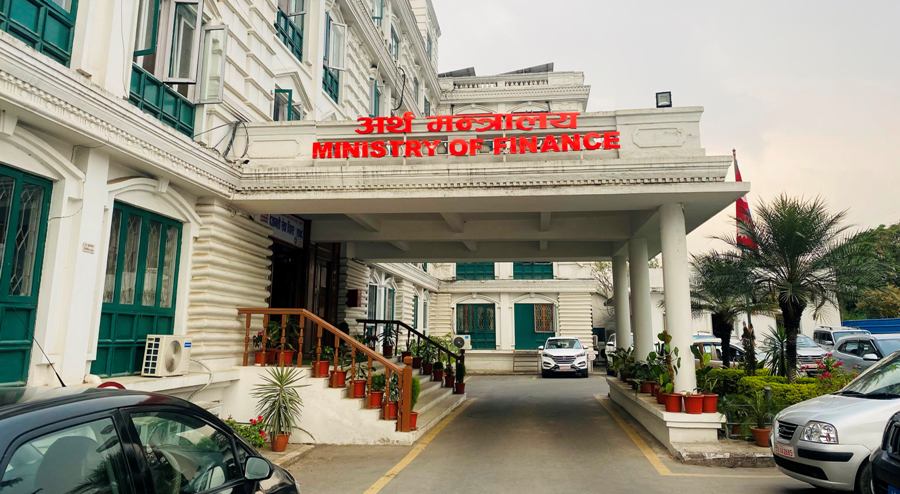
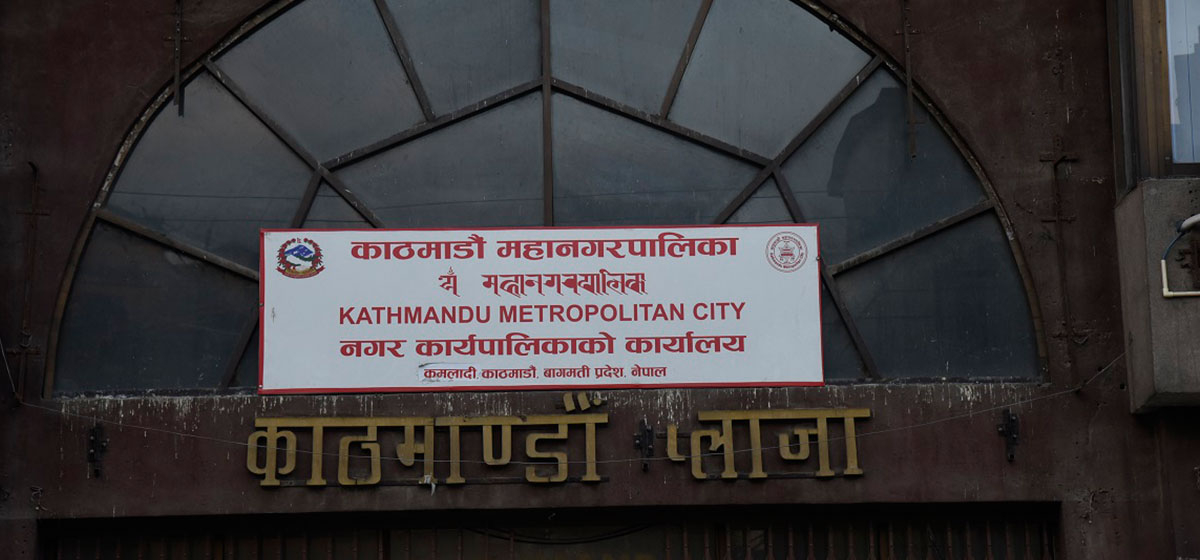
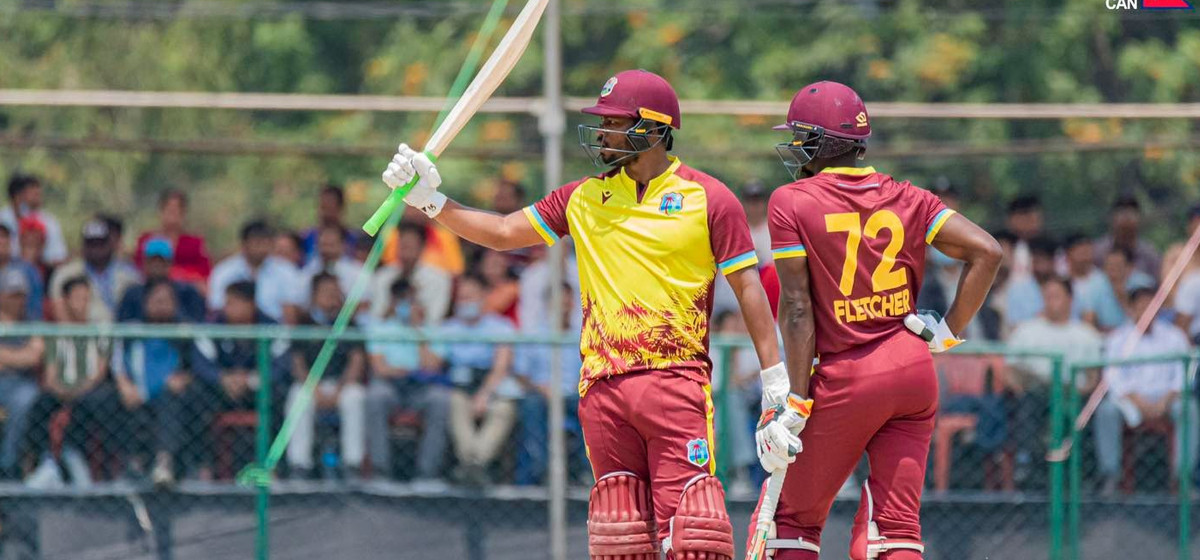
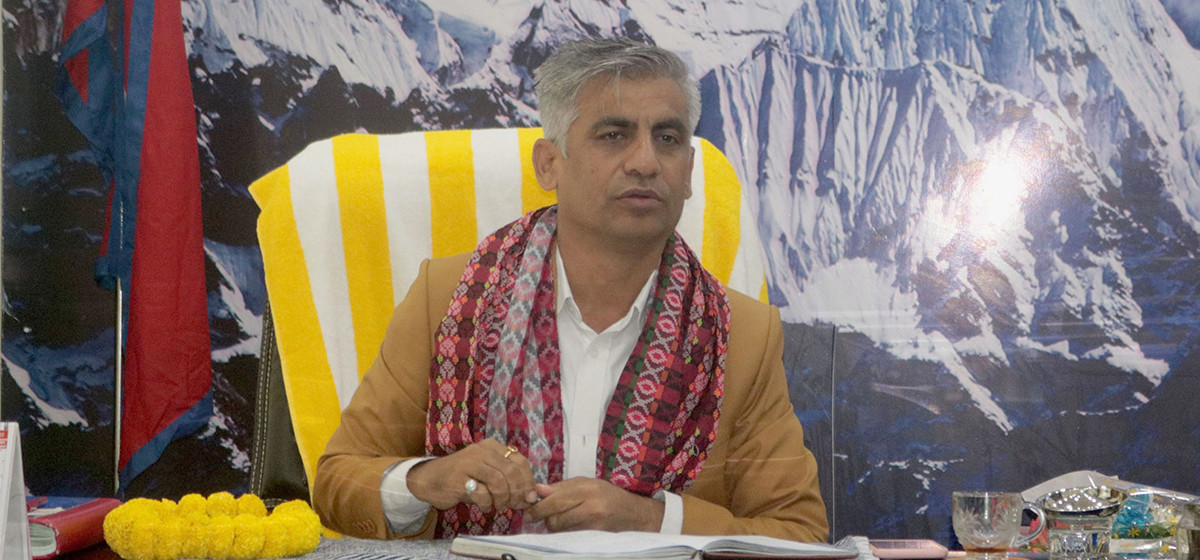
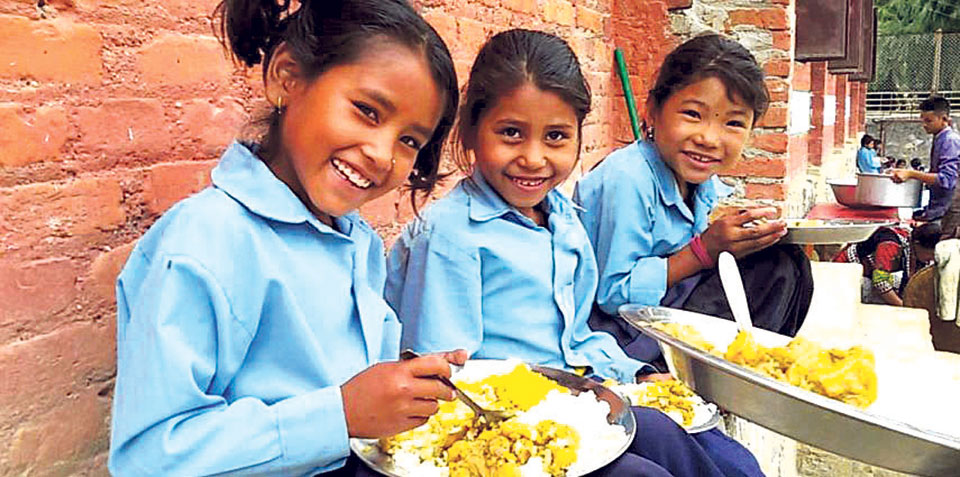
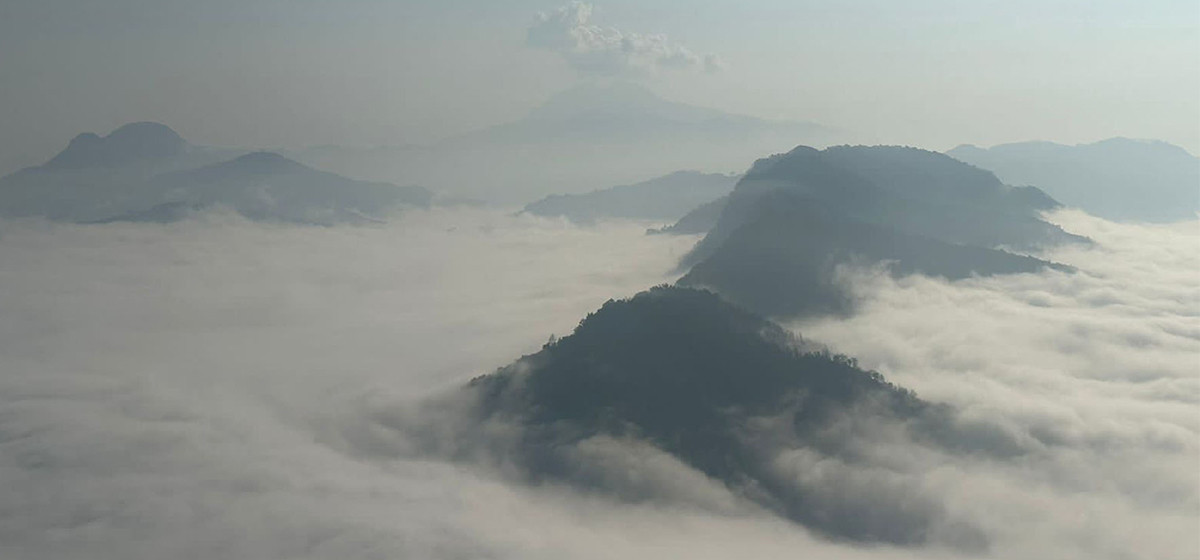


Leave A Comment